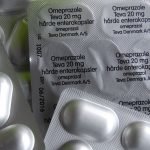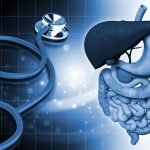Colon Reflorastation Therapy
Sharon Stills, ND and Victoria Bowmann, PhD
When I completed my formal naturopathic education and training and began private practice, I realized that my education had just begun. As patients presented their cases with many complexities, my journey of expanding knowledge and modalities continued. It was during a seminar in Louisville, Ky., that I attended a breakout session with Victoria Bowmann on colon reflorastation therapy. This article takes a look at what colon reflorastation therapy is, how it works and some of its benefits, and includes a few case studies, as well.
About This Therapy
Colon reflorastation therapy is the introduction of a healthy intestinal bacteria supplement into the rectum, which delivers it into the sigmoid flexure of the colon. After one hour of retention, it will colonize the bowel; in three days, it will stabilize the entire five feet of the large intestine. This procedure is designed to reinforce the homeodynamic balance of the bowel flora. Why consider this modality for patients? Many individuals have taken antibiotics, had food poisoning or intestinal flu. When traveling in foreign countries, we are exposed to conditions with which our bodies are unfamiliar. Even though in many instances this exposure is non-pathogenic, these situations still disrupt the normal intestinal flora of individuals. Fermentation in the intestines causes increased bloating and flatulence. Putrefaction in the intestines is indicated by odorous flatulence and stools. By supplementing the intestinal flora with a variety of Lactobacillus species, we replace what might have been destroyed or disrupted. It is beneficial to repeat this as conditions dictate.
Rectal Application
The pH of the stomach is 3.0 at rest and can vary from 1.5 to 4.6 during digestion. Bacteria thrive at a pH of 6.4 to 6.9. The purpose of hydrochloric acid and pepsin is two-fold: 1) the digestion of protein and fat; and 2) a main line of defense against bacterial invasion. Since pH is nondiscriminatory, it will defend our bodies against e. coli as well as lactobacillus. Therefore, there is only a 2% to 5% chance that the healthy bacteria will make it into the colon. Enteric-coated caplets have a slightly higher delivery through the stomach acids; however, patients with severe gut problems still have difficulties with this delivery for bacterial colonization, whereas a rectal application has 100% delivery, as it bypasses the digestive process. Since the pH of the colon is slightly acidic, the bacteria thrive and double every 20 minutes. According to Swiss physician Thomas Rau, there is such an importance for reflorastation, since we should have more bacteria in our bowels than cells in our body.
Bacteria Selection
When I began working with rectal infusions in 1991, I started with acidophilus and bifidus. However, I soon found that there are very reputable labs that offer a variety of lactobacillus strains. For six months, with the help of a homeopathic physician, we began using Electroacupuncture According to Voll (EAV) testing on every available strain. It was interesting to note that identical strains from different labs responded differently. At this time I developed a “bulk mixture” of 20 strains of bacteria with a minimum of 50 billion bacteria per dose. Periodically, I continue to test these and any new bacteria to determine those that best respond to the majority of patients.
The proprietary formula is available in disposable, individual “at-home” kits to dispense for patients’ use, convenience and privacy. However, in very ill patients, we continue to individually test and mix custom formulas.
The Procedure
The therapy can be administered after a bowel movement, following a colon hydrotherapy or with loose stools. Some practitioners conduct the procedure in their office; others offer patients the disposable kit to use at home.
The patient should lie on his or her left side with the right knee flexed against the abdomen and the left knee slightly flexed. The bacterial infusion is introduced into the rectum, where gravity carries it into the upper rectum and sigmoid colon. During the procedure, there will be a false sense of needing to move the bowels. However, after removing the rectal tube, the feeling will slowly subside.
The patient turns into a supine position to rest for 5 minutes. As long as there is no bowel grumbling, the patient can dress and go about his or her day. Due to the small quantity of fluid of the liquid suppository, it is easy for most individuals to retain the reflorastation for the needed one hour. If there is rumbling in the bowel, elevating the hips for the first hour assists with retention.
Possible Reactions
In the first three days, 20% of individuals experience some reaction, such as a change in the color of the stool, the presence of mucous or an increase in flatulence for a few hours. The color change of the stool generally falls into three categories: a yellow stool is a liver reaction, an army green stool is a bile (liver or gall bladder) and a mottled stool is the clearing out of diverticuli. Generally, within three days there is a change in elimination. In cases of constipation, there is ease in defecation and reduction in gas and bloating. In cases of irritable bowel syndrome (IBS) or diarrhea, there is better form to the stool, with a decrease in frequency of stools, pain and bloating. Cases need to be reevaluated to determine the frequency of treatments.
Benefits
The primary importance of colon reflorastation therapy is to restore the colon’s bacteria to its healthy and normal state. The functions of the large intestines are many. When the intestinal flora is at an optimal balance, vitamins B12 and K are produced; nutrients missed in the small intestines are absorbed while the toxins are bound and held for elimination; water and bile are reabsorbed; food stuff is decomposed into fecal material; and the stool is eliminated.
For GI health, we need to use a multifaceted approach. Even though reflorastation isn’t the only piece to the puzzle of achieving a healthy colon, it is an important piece. In addition, we must consider water consumption for hydration, healthy essential fatty acids for lubrication, fiber as the bulking agent to move matter through the GI tract, as well as the abundance of healthy bacteria. When there is extreme constipation, additional supplementation may be needed, such as magnesium oxide to direct water to the mucous membranes, and Hyssopus officinalis, which strengthens the muscles of peristalsis. Many NDs also utilize acupuncture or other modalities in their toolbox to complete the healing picture.
It is interesting to note that after the administration of broad-spectrum antibiotics, the body is presumed to be free of bacteria. However, if there are any bacteria left, would they not be antibiotic-resistant and potentially pathogenic? As quickly as bacteria can duplicate, would we want to consider the introduction of vital probiotics to recolonize the gut and reduce the probability of pathogenic microflora overpopulating the area? In my experience, it is best to wait 24 hours after the last dose of an antibiotic before beginning reflorastation.
We hope you will consider this modality for each patient, knowing that a healthy gut is a sign of a healthy immune system. In this way, our naturopathic approach supports our patients’ healing.
Case Study 1
A 42-year-old patient presented with history of chronic constipation since childhood. Bowel movements occurred only 1x week, without complete evacuation. After administering one reflorastation rectally, the patient reported an increase in gas and bloating, with one small bowel movement produced two days later. Another reflorastation was administered one week later, and the patient reported having the first formed bowel movement in years. The patient began having bowel movements every three days, with a reflorastation being administered weekly for the first month. At the end of the first month, the patient was still having formed bowel movements every three days regularly, and sometimes every day. For the next month, we administered a reflorastation every other week. At the end of this month, the patient reported having bowel movements daily, and feeling energetic and sleeping better than ever before. For maintenance, we administer one reflorastation monthly, and the patient continues to have regular, daily bowel movements.
Case Study 2
A 28-year-old female has suffered with chronic acne since age 18. After taking the patient off of food allergens, cleansing the liver and adding appropriate vitamin and mineral supplementation as well as topical azelaic acid, the patient still had only 65% improvement. After administering one reflorastation monthly over a period of three months, the patient reported an 85% improvement in her acne.
Case Study 3
A 65-year-old female presented with colon cancer metastasized to the liver. She had been undergoing chemotherapy for the last six months, and had chronic diarrhea. After only one reflorastation, her diarrhea stopped and has not returned.
Case Study 4
A 35-year-old, healthy male (fireman by occupation) had suffered with undiagnosed IBS, having daily loose bowel movements with excessive gas and bloating. Although a gastroenterologist ran “every test possible,” they all were inconclusive. The patient was told his large intestine was inflamed and irritated. He decided to explore an alternative approach. One colonic with reflorastation was administered. He left the office hopeful yet with reservations about the possibility of normalcy. Three weeks later, I received this note: “It has nearly been three weeks since my procedure and I just wanted to drop a note to say I appreciate what you do! I have never felt so ‘normal’ in a long time. What you have done for me is given me back my life. I am not afraid to leave the house for extended periods of time. I can also enjoy my job a lot more now. I genuinely thank you.”

Sharon Stills, ND founded Naturopathic Solutions Inc. in 2002. Today, her practice is one of the largest in Long Island, suggesting natural resolutions to a wide range of illnesses acute and chronic while also assisting health patients in their quest to maintain or improve their health. She graduated from SCNM, and is trained and practices in a broad range of natural therapeutics, including BHRT, botanical medicine homeopathy, lifestyle counseling, colorpuncture, hydrotherapy European biological medicine and complementary naturopathic therapies. Dr. Stills is a national lecturer and natural medicine consultant, is licensed in Arizona, and is a member of the AANP and NYANP.
 Victoria Bowmann received her PhD in homeopathy and natural medicine from Westbrook University in Wierton, WV. She also holds a doctorate in homeopathic medicine from the British Institute of Homeopathy. Bowmann has written articles for many publications, been interviewed on television and on radio, and given numerous presentations worldwide. She has lived in Arizona since 1968, and lives by the motto, “Happiness is a choice.”
Victoria Bowmann received her PhD in homeopathy and natural medicine from Westbrook University in Wierton, WV. She also holds a doctorate in homeopathic medicine from the British Institute of Homeopathy. Bowmann has written articles for many publications, been interviewed on television and on radio, and given numerous presentations worldwide. She has lived in Arizona since 1968, and lives by the motto, “Happiness is a choice.”










